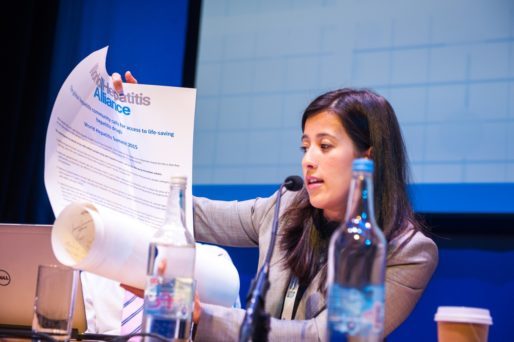
The annual World Hepatitis Summit is the only global event which brings policymakers, civil society, public health experts and other key stakeholders together as partners in an effort to eliminate a major global killer. Attracting delegates from 109 countries, this year’s Summit carries the theme “Implementing the Global Health Sector Strategy on hepatitis (GHSS): towards elimination of hepatitis as a public health threat”.
Underpinning these plans is the consensus that elimination of viral hepatitis as a public health threat is feasible and achievable by 2030
The Strategy, which was ratified by 194 governments at the World Health Assembly last year, provides a framework for concerted action by WHO and Member States. This guiding framework has been further supplemented by WHO regional elimination plans that contain more detail relevant to the six different regions. Underpinning these plans is the consensus that elimination of viral hepatitis as a public health threat is feasible and achievable by 2030.
Now, with over 300 million people living with chronic viral hepatitis globally and over 1.3 million deaths each year, significant barriers still need to be addressed, from issues around access, equity, stigma and discrimination to inadequate data and lack of funding to respond to this epidemic.
This being said, new opportunities provide hope for the elimination of viral hepatitis and country champions have started efforts to pave the way so it’s very rewarding to see how far we’ve come in the past two years. At the 2015 Summit, we launched the Glasgow Declaration on Viral Hepatitis, which called on governments to make viral hepatitis a priority in national policy. In one week’s time we will be discussing how governments around the world can make elimination a reality in the next 12 years.
What am I most excited about? Well, there are so many things happening. Firstly, we are convening over 200 patient groups together on the two days that precede the Summit to strengthen the community voice and to support our member organisations across the world in advocacy, awareness-raising and issues relating to hepatitis.
 I’m also looking forward to seeing our global movement, NOhep, take another important step. At the Summit, we will be launching the NOhep Visionaries Programme for governments, with six governments spearheading it an effort to raise awareness and scale up successful approaches to elimination across the world.
I’m also looking forward to seeing our global movement, NOhep, take another important step. At the Summit, we will be launching the NOhep Visionaries Programme for governments, with six governments spearheading it an effort to raise awareness and scale up successful approaches to elimination across the world.
The three-day event will also include plenary sessions, panel discussions, simulation exercises, workshops and other events to educate and help participants strengthen their efforts to address viral hepatitis at the national level. The topics are organised according to the global strategy and its five strategic directions: Information for focused action; Interventions for impact; Delivering for equity; Financing for sustainability; and Innovation for acceleration.
Topics covered will include the data needed to decide on what interventions should be implemented and where to find the data, as well as how to measure the effectiveness of interventions; the interventions themselves in the three key areas of prevention, testing and treatment with examples of what is working and why; how to ensure that the Sustainable Development Goal pledges “to leave no-one behind” and “to endeavour to reach the furthest behind first” are put into practice, especially for marginalised communities like indigenous peoples, people who inject drugs, incarcerated persons, men who have sex with men and migrant populations; how to finance hepatitis programmes; and innovations on the horizon that will help speed the journey towards elimination.

The main conference will focus on hepatitis B and C as they are responsible for the vast majority of the burden of hepatitis globally. However, there will also be side meetings on hepatitis D and hepatitis E. Other side meetings will look at hepatitis in children, the role of the liver societies in hepatitis elimination, how to integrate hepatitis programmes into existing programmes and infrastructure to minimise costs, UNITAID’s increasing involvement in hepatitis C, policy as a tool for hepatitis C elimination and the launch of a new fund to catalyse action called HEP2030. The event will close with a Ministerial Declaration.
We, the World Hepatitis Alliance, will also mark our 10-year anniversary next week. Witnessing so many people from across the world convene in one place with a shared ambition is testament to all that can be achieved in a decade. I couldn’t imagine celebrating it anywhere else.
Hepatology, Medicine and Policy is now accepting submissions on this and related issues. For more information, visit: www.hmap.biomedcentral.com.
Comments